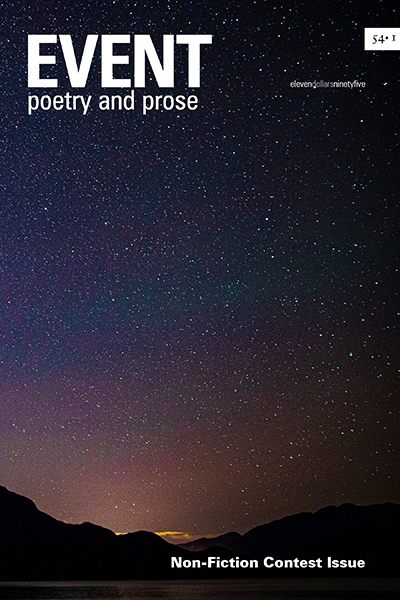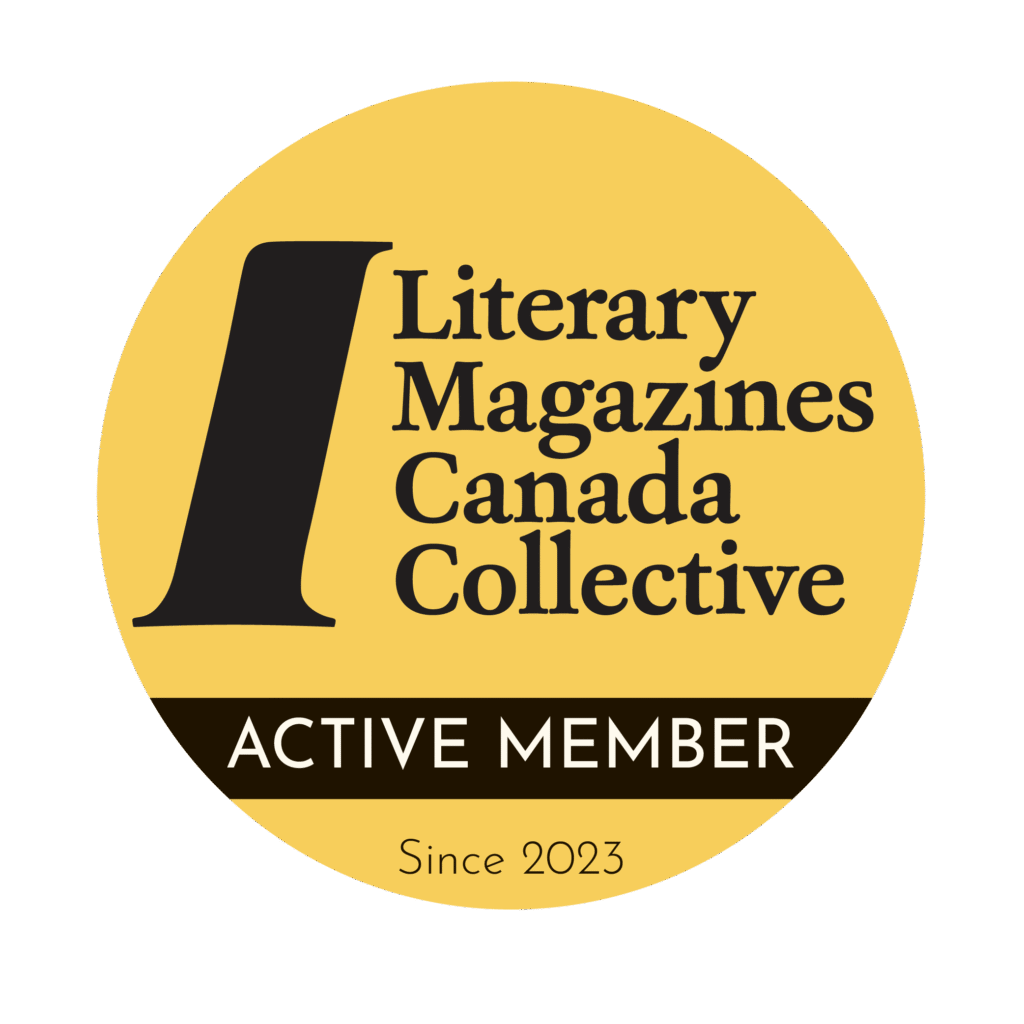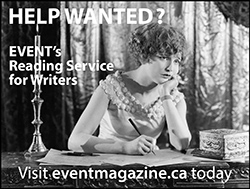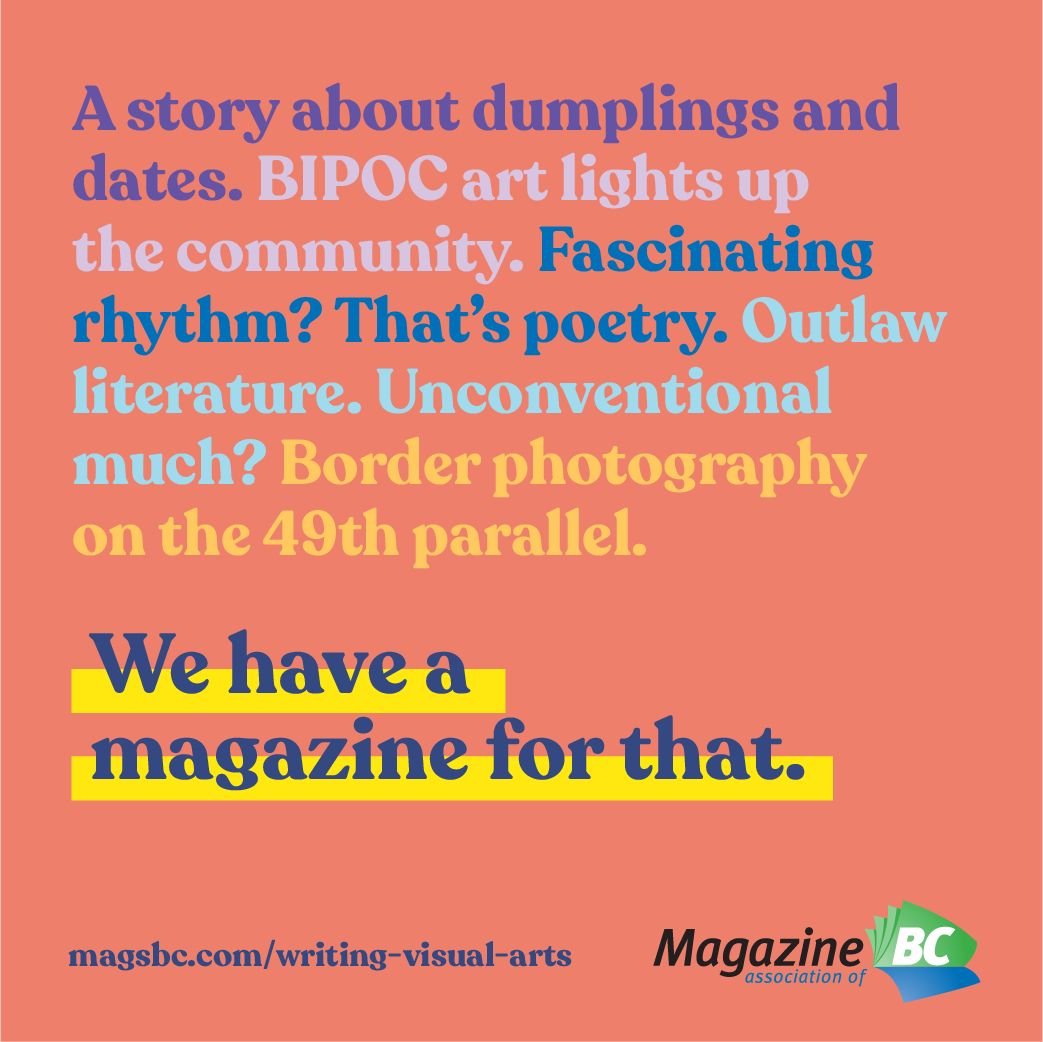Appearing in Two Places at Once: EVENT Interviews Armand Garnet Ruffo
Armand Garnet Ruffo draws on his Ojibway heritage for his writing. His creative biography Norval Morrisseau: Man Changing into Thunderbird appeared with Douglas & McIntyre is a finalist for the 2015 Governor General’s Award for Nonfiction. In 2015, The Thunderbird Poems, poems based on the paintings of the artist, was published by Harbour Publishing. He currently lives in Kingston and teaches at Queen’s University. Two of his poems are included in EVENT 44/2.
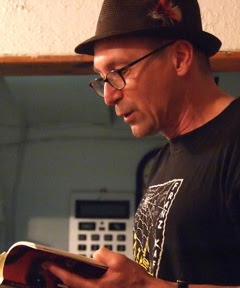
EVENT: You’ve had two books published within the last year, both of which are about the life and work of acclaimed Ojibway painter Norval Morrisseau. The first, Norval Morrisseau: Man Changing into Thunderbird, is a narrative biography, and the second, The Thunderbird Poems, is a collection of ekphrastic poems based on the artist’s paintings. When did your interest in the life and paintings of Morrisseau begin? How did you first come across his work? Do you recall being immediately affected by it, or being especially affected at some other point?
AGR: I believe the first time I saw his art was in the mid-1970s in a newspaper, but the first place I saw it and thought about it, was in Ottawa a few years later. I was a university student working for the now-defunct Native Perspective magazine. They were doing a special issue on Native art, and that was the first time I really came face to face with it. And, to put it frankly, I was amazed. Morrisseau later had a solo show at Robinson Gallery in Ottawa, and I went to see it, and standing in front of those canvases, I was mesmerized. For a moment or two, I even thought I should take up painting, but I guess I was already hooked on poetry. The iconography and colours were extraordinary. You have to realize that Morrisseau was the first person to do this kind of art, and he was already famous for it. Since his first sold-out show in March of 1962, he had been more or less always in the news, so I knew who he was even if I hadn’t seen his work until then.
E: In 2005, the curator of the Norval Morrisseau, Shaman Artist retrospective at the National Gallery of Canada asked you to write about Morrisseau for their catalogue. You agreed to do it, but only with certain conditions. As you explain in your introduction to Morrisseau’s biography:
“I did not want to write the standard academic essay that the National Gallery might expect. And I made it clear that I was not interested in reportage. What I wanted to do was tell a story. I wanted to employ the traditional form of acquiring knowledge that is central to Ojibway culture and to Native cultures in general. And, as much as possible, I wanted to ground my story in Anishinaabe epistemology and what we now call oral history.”
What did this approach to research, story-telling and writing look like, in practice? What was the process of gathering together the stories of Morrisseau’s life like for you as the writer and researcher, and as a person who is also of Ojibway heritage? And was it difficult to condense all of what you gathered into the form of a book?
AGR: First, I have to say that I chose this approach because it feels natural to me. I guess what I was saying in the forward is that I did not want to write another academic essay. There were already two other people doing that kind of writing in the catalogue, and I wanted to bring something else to the project. In traditional Ojibway culture, storytelling is the prime way of attaining knowledge, and so I wanted to bring that element to the catalogue. I wanted to tell a story, draw the reader in, and in the process the reader would learn things about Norval’s life that for the most part are grounded in Ojibway epistemology. For example, the book breaks from strict mimetic realism and includes the mythic world, the world of the Ojibway Manitous, which I incorporate into Norval’s life, because that’s the way he saw the world. He always said that the Manitous, the “demi-gods” as he called them, inspired his work. Another element I wanted to bring to the book was empathy; despite Morrisseau’s huge “human flaws” – such as addiction, abandoning his family – I could easily relate his life to what I saw growing up. So I also wanted that element in the narrative so that readers would come to understand him, in the context of his times, and not simply pass judgement. I therefore collected the facts of his life – often contradictory by the way – and the stories about him, and wove them into a long narrative, which resulted in the book.
I don’t think people realize that the book is not an “on the nose” standard type of biography, and so it has been a challenge to get people to pick it up, but I’m also amazed by the emails I’ve been getting by the people who have read it. It’s been a very positive experience. As for process, I know this sounds rather cliché, but once I got going the book kind of wrote itself. I had digested the material, and I was ready. You just know it. I have to say though that the biggest challenge was trying to sort out the chronology of Norval’s life, because he kept appearing in two places at once – sometimes on opposite sides of the country. Try to figure that out!
E: Did you intend to write a collection of poetry about Morrisseau’s paintings in addition to the biography, or did the poems simply start to emerge as you conducted your research? At what point did you realize that the poems were going to become a separate book? What did you learn/discover about the paintings, or the artist, or the process of ekphrasis, through writing these poems and studying the paintings so intently?
AGR: Originally I thought that I would write a few poems based on the paintings to function as bookmarks for the reader, since most of the paintings are dated. I thought the poems would thus give the readers a timeline so they would know where they are in the narrative. However, as I immersed myself in the paintings more and more poems came, and I soon realized I had far too many poems to include in the one book. This happened fairly soon in the writing process. The poems came naturally, though I have to say not always easily; one poem in particular comes to mind. I had written a draft of it, but I wasn’t happy with the first stanza. That summer I was in Wales teaching a creative writing course, and I jumped up from bed in the middle of the night, grabbed a pen and paper, and rewrote the first stanza. This to say that no matter where I was my subconscious was working on the book. As for the finished books, I did include a few of the more lyrical poems in the biography, and a few of the longer prose poems in the poetry collection to anchor it in narrative. I like the idea that the books are connected in more ways than one. As far as process goes, I learned to trust my imagination and let it take me “inside” the paintings so that I wasn’t merely skimming the surface of them.
E: Two new poems of yours, “Luck” and “Pauline Johnson’s Dress, 1892” (included at the end of this interview) will be published in the next issue of EVENT magazine (44/2). Are these part of a new project/collection? What else are you working on right now?
AGR: No, not really, I probably have enough poems kicking around to fill another book, but I like to have some kind of theme, some glue, holding a collection together. As it stands, I think the poems are too disparate to form any kind of cohesive collection, which means I don’t think I’ll be sending them off any time soon. I enjoy writing, and I’m usually working on something, but I don’t feel the necessity to publish everything I write, at least not right away. Then again, you never know. Maybe a few new pieces will come along that will tie it all together. As for new work, I do have my sights set on another project –not sure what the form will be yet – but I’m still at the preliminary stage, and I’m afraid to talk about it in case I talk it out of myself.
E: What books – or writers – are intriguing or inspiring you at the moment? What else is inspiring/influencing your writing, thinking or research at this point in time? And what, would you say, have been the most lasting influences or inspirations for you, over a lifetime of writing and research?
AGR: When I’m teaching, as I’m doing now, I always try to put a couple of books I haven’t read onto my courses. This term I’m teaching a graduate course in Indigenous literature so I put on annharte’s Indigena awry, and Katherena Vermette’s North End Love Songs. In addition, I recently read a couple of autobiographies, Edmund Metatawabin’s Up Ghost River, and Ernie Louttit’s Indian Ernie. As for fiction, I’m currently ploughing through The Penguin Book of Canadian Short Stories, edited by Jane Urquhart. It’s a big collection with a lot of stories in it, and I’m enjoying it.
As for the most lasting influences, these are the people I’ve met along the way, like the Odawa Elder and storyteller Wilfred Pelter, who was a good friend and mentor, the Okanagan educator and writer Jeannette Armstrong who hired me to teach in Penticton, B.C., when teaching wasn’t something I had considered. Then there are those writers whom I met at exactly the right time, like the novelist Adele Wiseman, the playwright George Ryga, and the writer Alistair MacLeod, who all encouraged me to continue writing, no matter what! But then again, perhaps the most lasting influence is simply good writing. I don’t have a particular list of writers I admire – there are far too many – and I tend to read widely and without rhyme or reason. Though the last few years I’ve taught an international Indigenous literature course, and it’s been great to discover writers who are more or less off the radar. But whether it is prose or poetry I am reading, I tend to get cranky and impatient with – to put it delicately – inferior work. Whether it is an Indigenous or non-Indigenous writer, I will not finish a book if I think the writing isn’t very good – no matter what the cover may say! Life is too short, and there is plenty of good writing to discover.
—
Pauline Johnson’s Dress, 1892
The first thing I notice
is your tiny waist,
and I wonder if you wore a corset
to bind and shape you.
As for your stature,
fittingly tall I think
for a woman still standing on edge
of controversy.
(Will the real Pauline please stand.)
But I have to admit
the buckskin dress you wore
to dramatize your recitals
disappoints me.
Stiff and faded,
ermine trim yellowed,
silver broaches tarnished.
Entranced as I am,
it is a dead thing.
An accompanying performance poster
featuring the young,
daring woman
I always dreamed of meeting
Says it all:
Miss E. Pauline Johnson,
In Her Unique and Refined Recitals of Her Own Works.
Canada’s Foremost Comedienne and Poetess.
Pathetic, Dramatic, Patriotic.
Endorse and Applaud her.
Makes me wonder though, if you
really thought you were pathetic?
Did your ability to arouse pity,
sympathy, sadness,
make you a riveting stage presence?
Or did the serpent of doubt
wrap its leathery tongue
around you?
Maybe making you
feel inadequate,
miserable, contemptible.
Then again, maybe
you just laughed it off,
at yourself,
when you chose
to play with meaning.
A cordon of wire
and over 100 years
distances us Pauline,
but that one photograph
with your arms bared
stares back at me,
hands on hips,
head tilted forward,
eyes penetrating time
like a wish,
your voice in perfectly
enunciated English,
grabs and holds me
like a dance partner,
you leading the way.
—
Elena Johnson has been a finalist for the CBC Literary Awards and the Alfred G. Bailey Poetry Prize. Her first book of poetry, Field Notes for the Alpine Tundra (Gaspereau, 2015), was written at a remote ecology research station in the Yukon. Her work has appeared in numerous journals and anthologies, including The Fiddlehead, ARC, Lemon Hound and Best Canadian Poetry in English 2015.






